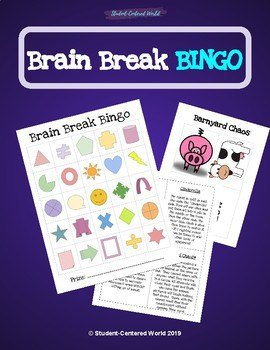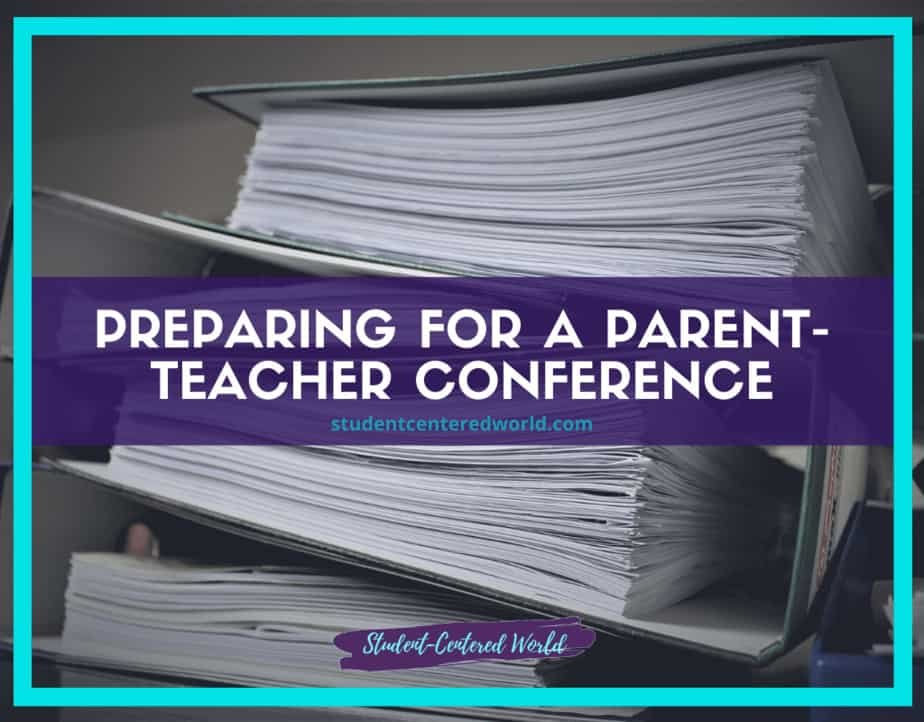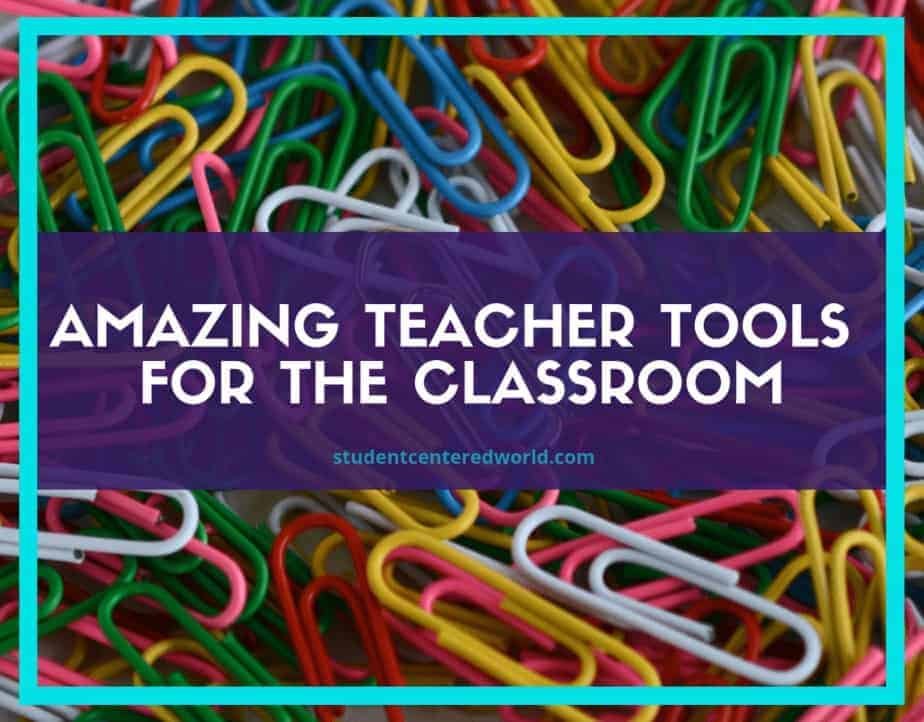Easy, Fun Brain Break Games for K-12 Students
If you’ve followed our series on the importance of brain breaks in the classroom (especially brain break games), you know how passionate we are about their need.
Not the fact that they’re nice, but that they’re a need.
We have students in our classroom that have been in front of a screen since birth. They are lacking in the soft skills that previous generations have been learning innately. We need to help them learn how to take a breath and refocus when it’s necessary.
You take a minute when you need to regroup, right? Why should we expect that our students don’t need that just as much as we do?
The catch-22 with brain breaks in the classroom is that there are so many to choose from that they become overwhelming. Which do you choose? Will your students react appropriately? What was that one they really liked two months ago?
The last thing you want a brain break opportunity to do is to stress you out, and yet the overwhelm can do just that.
It’s important to give your students choice so they buy into what you’re doing, but on the same note, having them argue over which mindfulness activity they want to do is pretty much the most counterproductive thing that can happen.
There are so many options out there when it comes to brain break games for the classroom. The importance is not necessarily finding these activities, but truly understanding the importance of playing brain break games for your students’ achievement and success.
Brain breaks are short activities that students do between learning sessions – which could either be lessons, assessments or lectures. The benefit? These quick exercises release stress and help bring your students back to a calm state so they won’t lose focus on the learning at hand. It helps them stay attentive, happy, and content for the rest of the session.
Implementing Brain Break Games
So, how does it work? It’s important to understand that students are individuals. Some may need extra stimuli while others do not. For example, some students find creative ways to calm their brains while others take more physical approaches like getting up and walking around or even doing stretches. The key is understanding what your students’ needs are so you can pick the best brain break games that will work for them as a whole.
Some students’ needs may diminish when in a classroom environment while others require more in order to maximize their potential. It’s up to you, the educator, to figure out what each of your students needs and then provide them with that essential element that will promote learning among all.
When it comes to brain break games and their importance, you need to remember that there is no one-size-fits-all. There are so many different types of brain breaks, and they can vary based on:
* Age/Grade Level: For example, a kindergarten student would need an activity that requires minimal direction while a secondary school student may require more challenging exercises.
* Student Personality: Some students need a challenge, while others may need calming activities.
* Learning Objective: For instance, if the purpose of the activity is to build community among students, then group activities would be more suitable than individual exercises.

There are four different types of brain break games that can help students during their learning sessions:
1) movement/gross motor games
2) kinesthetic games
3) creative activities
4) social interactions
Movement/Gross Motor Games
These are exercises that require physical movement. Some examples would be doing jumping jacks or walking around the room in a circle. Since students are used to sitting for long periods of time, having them move around requires them to focus their attention on the activity.
Kinesthetic Games
Kinesthetic activities are ones that involve physical touching like walking through barriers, passing objects around in a circle, throwing bean bags into buckets or boxes, etc. These types of exercises get students moving while working with others. For example, playing games like Musical Chairs, Red Light Green Light, or Simon Says.
Creative Activities
These are activities that require students to come up with ideas without any guidelines. Brain breaks that fall under this category may involve drawing something on the board, making a list of adjectives to describe someone in class, writing sentences using words beginning with specific letters, etc.
Social Interaction
These are activities that require students to work with other students in order to complete the task. Some examples would be playing charades, interviewing each other, or doing a listening activity. The focus of these games is communication.
Some benefits of taking brain breaks include:
* Promoting physical and mental well-being
* Promoting emotional regulation and classroom behavior
* Engaging students in active learning activities
* Increasing student motivation, social skills, and attention to the task
* Separate idea generation tasks from decision-making tasks. For example, if your students need time to come up with ideas for an essay they’re writing, you wouldn’t interrupt their focused brainstorming with a brain break. However, if they need a 10-minute break from a long project or task, a brain break may be the perfect solution!
While there are many brain break games out there, I find that brain break bingo works really well at keeping students engaged in the process.
(This post may contain affiliate links that won’t change your price but will share some commission. As an Amazon Associate, I earn from qualifying purchases. Please read our disclosure policy for more information.)
This game is perfect for elementary and early middle school-aged students.
Before you even start the game, which is ongoing, the class picks an activity that is an “extended” brain break. Think an extra recess, yoga, etc. Something that is exciting for them and you can market as the “ultimately brain break”
Once that is decided, the game begins.
The board is meant to hang in a spot where it is easy to access, along with the game pieces. I would suggest getting a small container, like this one, to hang on your board near it to hold all the pieces (ad).
The pieces will connect to the board, so my suggestion is to laminate the board and the pieces and then use velcro dots to prepare to secure them (clear ones work the best (ad).
Now it’s completely up to change which brain break activity you complete.
When you recognize the need for your class to have a brain break, pull out a game piece and determine where on the board it goes.
Then, you will see which activity that piece correlates with.

Once there are 5 brain breaks that have been completed in a row, the “big” brain break activity can be completed.
This crosses so many things off the list. It helps the students get excited about each individual brain break activity because of the suspense of what it will be. It also keeps them excited about the activities in general because they collectively picked what the prize will be, so heading towards that is also a goal.
It also, subconsciously, teaches students small things they can do when they find themselves needing to regroup. Over time they will begin to recognize the signs of needing a brain break and start developing their own strategies in regards to how to fulfill that for themselves personally.
Sure, they may not play the same games when they get older, but they will remember what seemed to work to help them calm down, gear up, or focus and they will amend to their own needs.
And that right there is the win you are looking for.
If you want to check out Brain Break Bingo for your own class, you can find it here.
No students are too old, but…
While Brain Break Bingo may be more appropriate for the younger grades, there are ways to amend the idea to older students who will get just as engaged in the process. The key is to read the room and know your students. Some older students love to get into the spirit of their youth and play along, while others wouldn’t be caught dead playing something that is “below” them. Both scenarios are okay! I guarantee you can still find brain break games that accommodate the students you have in your classroom.
One way to make brain break games more appropriate for older students is by adding a competitive element to the game. While it seems counterintuitive, incorporating competition into something often leads students to actually enjoy what otherwise might be difficult for them. This is especially true in high school where peer pressure can work against you if you are trying to get your class active.
Here are some ideas of brain break games that might prove more suitable for older students.
“The points don’t matter” game
This is still a great way to get the class moving while also allowing students to pick their own brain break games that they know they are good at. No one ever gets too old for this game! To play, each student gets five points. They can spend them on whatever brain break activity they want. If a student doesn’t have any points left, they must perform a burpee for each point.
When all of the students are out of points, the class can count how many burpees everyone did and who completed them the fastest. Have the students repeat as many times as necessary until everyone has been able to do the activity of choice.

Make it a relay race
This is another great game that can be played with all of your students, or you can break it out into smaller groups if you have multiple classes that need to do brain breaks at the same time. To play, divide 24-30 students into two teams and place them at two different starting lines. Have them line up in a single file line. Assign a brain break activity to each student, but don’t tell anyone which one they will be doing until right before the race starts.
Each team gets a set amount of time (around 20-30 seconds) to complete as many exercises as possible from their list with everyone on the team doing them. On “go”, have each team member go as fast as possible to do their exercise and then tag the next person in line before moving on to the next one. The first team that finishes all of the exercises wins!
Scavenger hunt
This is a great way to get your students searching through the room while also getting some exercise! To play, give each student an index card (or multiple cards for large classes) and ask them to find something in the room that is on their card. For younger students, you can make things like “leaves” or “sidewalks” on the cards; older grades may need more specific items. For the scavenger hunt to work, you will need to walk around with your class and teach everyone about what they are looking for through this activity. If your school is on a semester system, have them race each other in their classes or have one grade compete against another!
Stop Driving the Teacher Struggle Bus
Are you struggling with student engagement, apathy, or keeping your class on track?
💫💫 There’s hope! 💫💫
Join my free teacher workshop “Choosing Choice” and in just 60 minutes, you’ll craft a practical plan to revitalize your teaching. Discover the magic of student choice in boosting engagement, gain quick implementation ideas, and explore strategies for year-long success.
Unlike overwhelming workshops, my approach guides you in real-time, providing more classroom options, reducing stress, and giving you more personal time.
Plus, you’ll earn a 1-hour professional development certificate and have 7 days of access.
Don’t miss this chance to transform your teaching; click below to secure your spot now!







